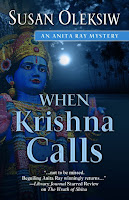Well-published Five Star/Cengage
mystery writer Sheri Cobb South is the author of more than twenty novels,
including the John Pickett mystery series and the critically acclaimed Regency
romance, The
Weaver Takes a Wife. A native of Alabama Loveland , Colorado
Question: What is the title and genre of your
novel? Why did you select them?
Answer: The
title is Too Hot to Handel, and it’s
a historical mystery set in Regency England. It’s the fifth in the mystery
series featuring Bow Street Runner John Pickett. I’ve loved the Regency period—strictly speaking, 1811-1820, but
for genre purposes more like 1795-1830—ever since discovering the works of
Georgette Heyer when I was a teenager. It’s the time Jane Austen lived and
wrote, and the combination of elegance and wit makes it great fun to write
about. As for the title, it’s a triple entendre: “hot” refers to stolen
property, the consummation of the romance, and the Drury Lane Theatre 24 February 1809 , which is the novel’s major set piece. As for
Handel, it’s not a misspelling, but a pun, since the fire breaks out during a
performance of a Handel oratorio.
Question: What inspired this novel? How did it come
about?
Answer: This is
the one I’ve looked forward to writing ever since the series began! The romance between John Pickett and the
widowed Julia, Lady Fieldhurst, has been developing slowly over the course of
the series. He was smitten from the first, but I knew it would take something
drastic to make her confront her own growing feelings for a man so far beneath
her socially. In fact, it isn’t until his life is threatened and she’s faced
with the prospect of losing him that she’s willing to “throw her cap over the
windmill,” so to speak. This is also the only book I’ve ever written that is
based on an actual historical event—that being the Drury Lane Theatre
Question:
Could you tell us a little bit about the heroine and/or hero of your novel?
Answer: John Pickett was a juvenile pickpocket who’s
rescued from a life of crime by the real-life London England
Question:
Can you tell us about some of your other published novels or work?
Answer: Besides the John Pickett mystery series, I’ve
also written a number of Regency romances, the best-known being The Weaver Takes a Wife. Before that, I
wrote five young adult novels for Bantam’s Sweet Dreams series, which is where
I got my start. They’re out of print now except for foreign language editions,
which kind of freaks my kids out; to them, I’m just Mom.
Question:
What are you working on now?
Answer: I’m continuing to write the John Pickett
series, but I’m trying to alternate them with other things. Right now I’m
working on an “old school” romantic suspense novel based on the Mediterranean
cruise I recently took with my husband. I credit a steady diet of Mary Stewart
and Phyllis Whitney during my teenage years with giving me a craving to travel,
and this book is my tribute to those ladies and their work.
Question:
What made you start writing?
Answer: I can’t
remember a time when I didn’t want to write! I got my first library card when I
learned to write my name—my mother swears I wasn’t yet three years old. As for
writing for publication, I decided to get serious about it when I was
twenty-eight and saw that big 3-0 looming on the horizon. That seems awfully
young now, but it made me ask myself, “Are you going to spend the rest of your
life saying ‘someday,’ or are you going to write that book?’ ” The result was Wrong-Way Romance, which was published
by Bantam in 1991—and which sells today on Ebay for $50 and up!
Question: What
advice would you offer to those who are currently writing novels?
Answer: This is
probably not going to be a very popular answer, but here goes: Resist the urge
to rush your book to print before it’s ready. Today’s self-publishing climate
can be a godsend to writers whose work doesn’t fit the mainstream mold, but it
also offers a great temptation to release inferior work into the world. The old
system, frustrating as it often was, served as a gatekeeper that forced writers
to hone their skills before their work could be published. Now it’s all too
easy to publish work that just isn’t up to the level of quality that readers
have a right to expect. And while it’s true that files can be updated and books
re-released as new editions, a reputation as a mediocre writer is not so easily
shaken. Find a critique group and/or beta reader(s) who will be brutally honest
with you. Hire a freelance editor if the mechanics of grammar or spelling are
not your strong suit. Do whatever it takes to be absolutely sure of the quality
of your work. Remember, it’s got your name on it, and the reputation you
establish with that first book will follow you for a long time.
Question:
Where and when will readers be able to obtain your novel?
Answer: It’s
available now in both hardcover and Kindle editions. The Kindle version, of
course, is available through Amazon. For those who prefer a print edition, all
online booksellers offer it. And while you probably won’t find it on the
shelves of your local bookstore, they can order it for you, if you ask them to.
If a hardcover is outside your price range, ask your library to purchase it.
Most libraries have a form patrons can fill out to request a purchase.
Sheri, thank you for an informative interview!
Note: Sheri is available for comments and questions.











